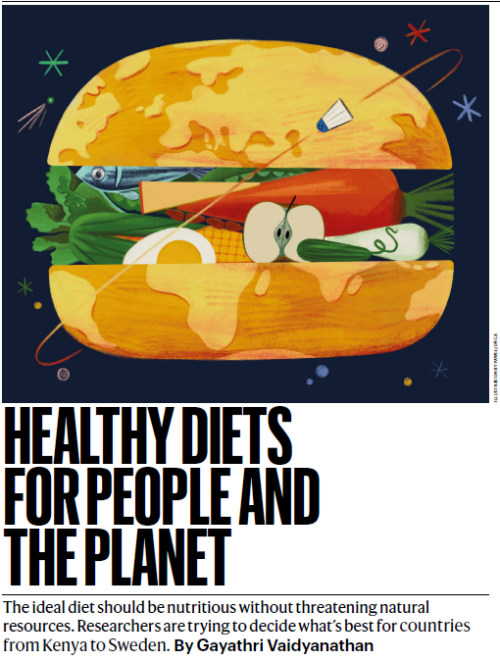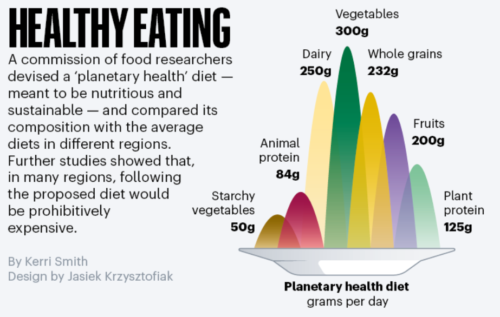To register, click here.

A recent report in Nature caught my eye:

It begins with the problem:
More than 2 billion people are overweight or obese, mostly in the Western world. At the same time, 811 million people are not getting enough calories or nutrition, mostly in low- and middle-income nations. Unhealthy diets contributed to more deaths globally in 2017 than any other factor, including smoking2. As the world’s population continues to rise and more people start to eat like Westerners do, the production of meat, dairy and eggs will need to rise by about 44% by 2050, according to the UN Food and Agriculture Organization (FAO).
That poses an environmental problem alongside the health concerns. Our current industrialized food system already emits about one-quarter of the world’s greenhouse-gas emissions. It also accounts for 70% of freshwater use and 40% of land coverage, and relies on fertilizers that disrupt the cycling of nitrogen and phosphorus and are responsible for much of the pollution in rivers and coasts3.
It talks about dietary recommendations for human and planetary health:

And it discusses the practicalities of achieving that kind of diet.
In fact, for the average person to eat the diet in 2011 — the most recent data set available on food prices — would have cost a global average of $2.84 per day, about 1.6 times higher on average than the cost of a basic nutritious meal12.
Despite the lack of more recent data, the ideas here demand consideration. Nature readers don’t get to see things like this too often and these issues deserve attention and solutions.